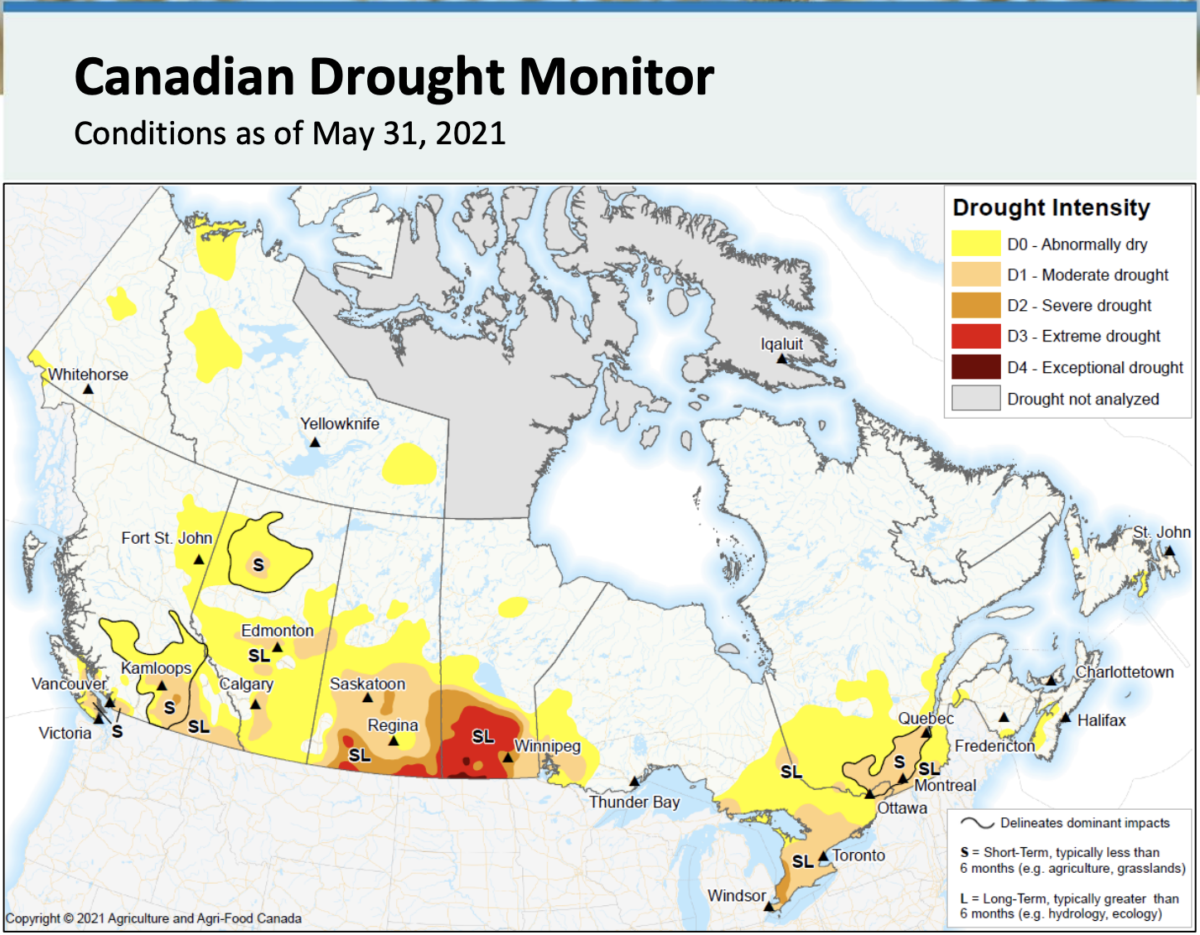With last winter’s lack of snow last winter and the lack of rain so far, we are in a drought. A drought is caused by a period of dry weather that lasts long enough to cause serious hydrologic imbalance. This can cause crop damage and a lack of water supply.
There are four different types of droughts:
Meteorological drought — when an area gets less rain and precipitation than normal. With a meteorological drought, one location can be in a drought while another location with the same conditions is considered not in a drought due to climate differences.
Agricultural drought — when there is not enough moisture in the soil to meet the need of crops.
Hydrological drought — when the water supply on the surface and in the subsurface are below normal.
Socioeconomic drought — when there is not enough water supply to meet the need of humans and the environment.

As of May 31st, most of southern Ontario is in a moderate drought. During a moderate drought, there will be some damage to pastures and crops. There could also be imminent or developing water shortages.
One of the best things to do when in a drought is to conserve water. Some of the best ways to do that are to use any water left over to water flowers, make sure there are no leaks in your house, and fix any dripping taps in your house. One drop per second wastes 2,700 gallons of water per year.
In your home, you can reduce your water use by taking shorter showers; don’t let the water run while you are washing your face, shaving, or brushing your teeth; only run a dishwasher or washing machine when it is full.
During a drought, water conservation may be recommended. Water conservation is meant to restrict the use of water. This includes watering your lawn at night, on weekends, or on odd or even day of the week, as wells as hand-watering plants instead of using a sprinkler system.
One of the most important things to do when in a drought is, of course, to conserve water. Even if a region is not in a drought, conserving water is a good thing to practice. Any little bit will help our environment.

